According to statistics, the total domestic passenger transport output in 2023 is 72.8 million, of which the Hanoi - Ho Chi Minh City route in 2023 will reach 9 million passengers, accounting for 22% of the number of passengers transported and 17.5% of the number of domestic flights.
Data analyzing average daily travel demand in 2019 shows that under existing infrastructure conditions, railways are almost unable to compete with air transport for distances from 200 km to 1,800 km. For distances over 500 km, domestic air transport shows outstanding advantages.
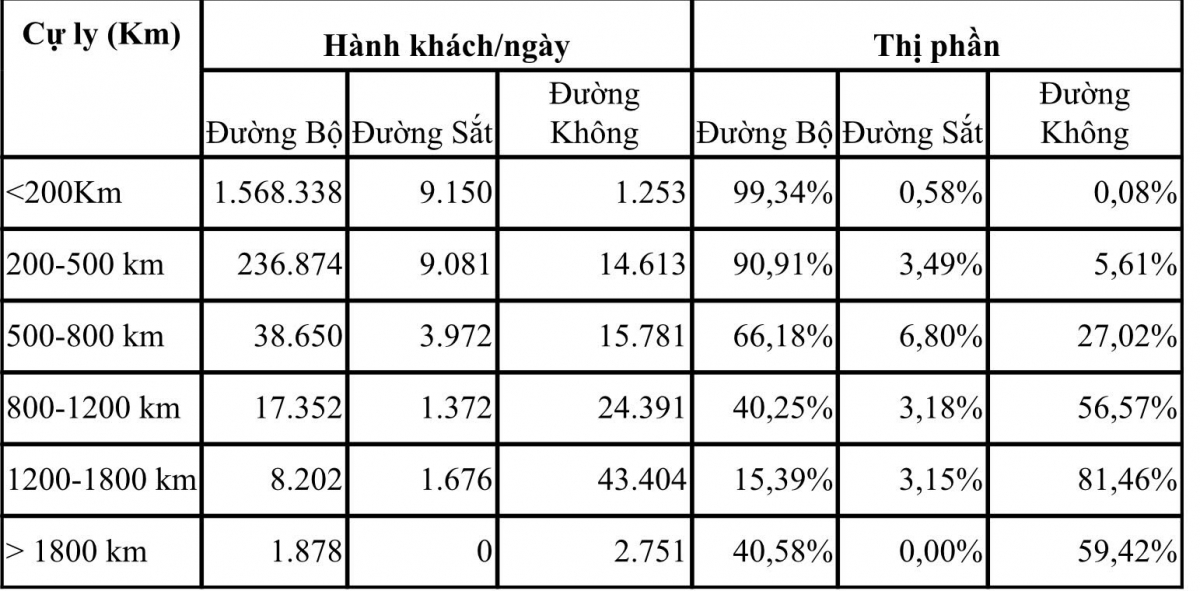
According to the forecast results of passenger travel demand for 5 transport sectors, by 2030, after completing the investment of 5,000 km of expressways as well as projects to upgrade existing railway infrastructure, the position of air transport will still be superior to that of railways at distances of 500 km or more, and with distances of about 800 km or more, aviation will still hold the highest position in the market.
By 2050, when the North-South high-speed railway has been put into stable operation, the data shows that at a distance of up to 500 km, railways have a superior attractiveness compared to air transport; at a distance of 500-800 km, it can be seen that the travel demand of railways and air transport is equivalent. However, at a distance of over 800 km, air transport is still the most attractive option among passenger transport modes.
Forecast data also shows that at distances of 500-1,200 km, travel demand clearly shifts from road to high-speed rail and air transport, while at distances of 1,200-1,800 km, high-speed rail clearly maintains its market share.
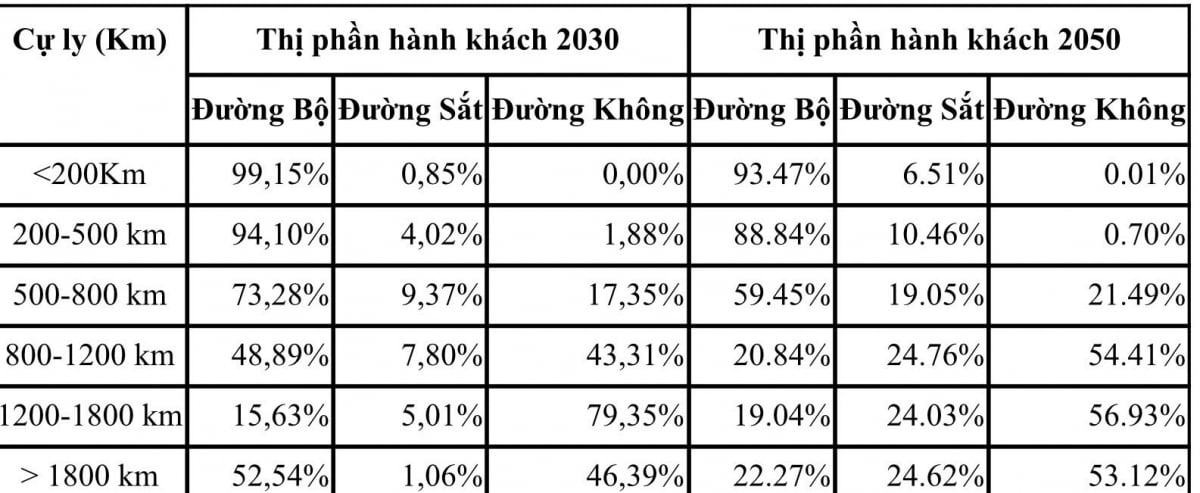
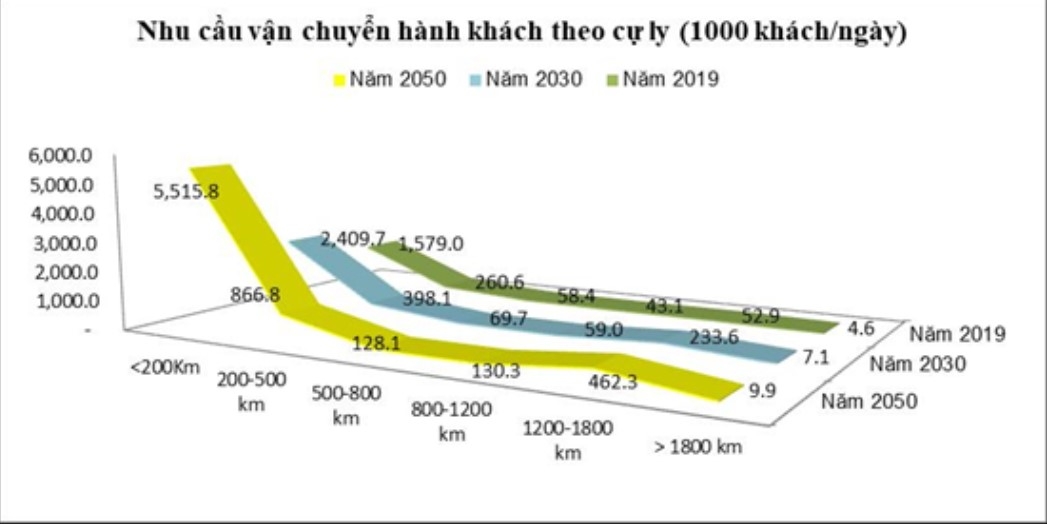
Let’s take a few examples to illustrate the role of these two types of passenger transport in two different contexts: Passenger transport in (i) short to medium distances, and (ii) long distances. In the case of the Hanoi-Vinh route (short distance) of about 300km, if using high-speed rail, it will cost about 1.4 million VND/trip and about 2 hours for the entire journey (1 hour 30 minutes for high-speed rail transport with an average speed of 200km/h, 30 minutes for the trip from home to the railway station).
For the same route, if using air, passengers will have to spend about 2.1 million VND/way and 2 hours and 20 minutes (including 1 hour and 00 minutes of flight time, 40 minutes of check-in time, and about 40 minutes of travel from Hanoi city center to the airport).
Clearly, for short-distance trips like in this example, high-speed rail presents a distinct advantage over air transport and is also an attractive option.
And of course, passenger transport by car will hardly be comparable to high-speed rail. In this context, high-speed rail has the potential to become a market-shaper for transport.
In another context, for example, with the Hanoi - Da Nang route, with a distance of about 760km, the high-speed rail can take 4 hours and 30 minutes for travel and 3.6 million VND/way (first class price), while the airline can make this trip in only 2 hours and 40 minutes and 2.1 million VND/way. Obviously, in this situation, if only considering the 2 factors of travel time and cost, the high-speed rail will be weaker than domestic aviation.
The emergence of a new member in the transport market may cause some customer segments to switch to high-speed rail. However, that does not mean that high-speed rail will become a competitor to domestic air transport. Let's take the following two examples to see that high-speed rail can completely join hands with aviation to promote the transport market together.
In the first case, high-speed rail provides services to the tourist segment that prefers to explore scenic spots along the length of the country. They experience and enjoy the cultural values of each locality they pass through.
Only railways can provide them with those requirements. These customer segments will certainly rarely use air transport. In this case, high-speed rail can be considered a new mode of transport that does not compete with air transport.
In the second case, imagine some passengers from provinces such as Thanh Hoa, Nam Dinh have the need to go to Ho Chi Minh City, one of the suitable options for this need is to use domestic aviation. In that case, high-speed railway plays a particularly important role in increasing the accessibility of this group of passengers to airports. In this situation, high-speed railway plays the role of promoting passenger demand for domestic aviation.
In summary, the introduction of high-speed rail has the potential to have positive impacts on the economy as a whole and could create a dynamic that reshapes the transport market. In some cases (e.g. short-distance travel), high-speed rail could become a competitor to domestic air travel. However, high-speed rail could become a complement to air travel in longer-distance travel cases.
Furthermore, high-speed rail, together with aviation and other modes of transport, can promote tourism development. How high-speed rail, domestic aviation (and other inter-provincial modes of transport) together divide the market and promote the development of the transport industry is another topic that needs to be discussed.


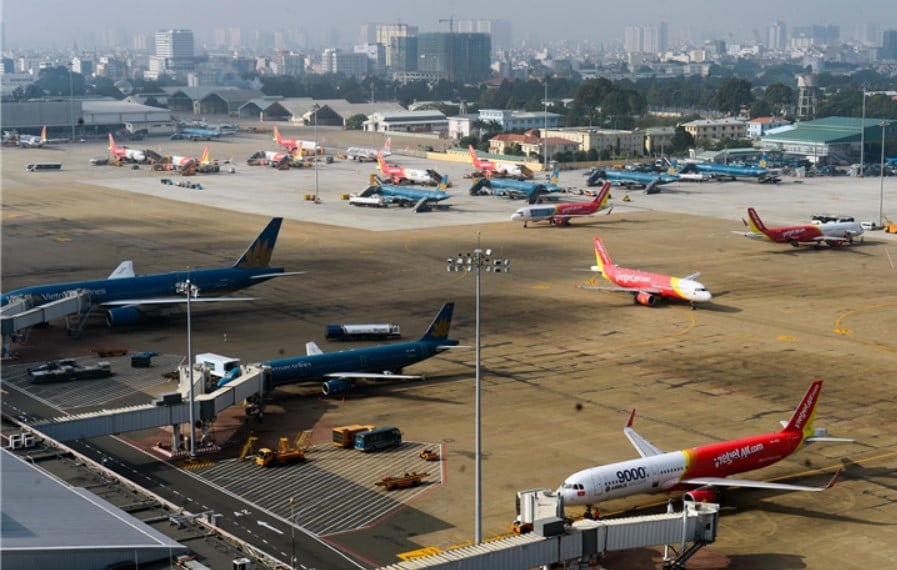





![[Photo] Closing ceremony of the 18th Congress of Hanoi Party Committee](https://vphoto.vietnam.vn/thumb/1200x675/vietnam/resource/IMAGE/2025/10/17/1760704850107_ndo_br_1-jpg.webp)
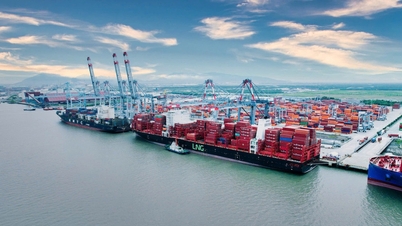





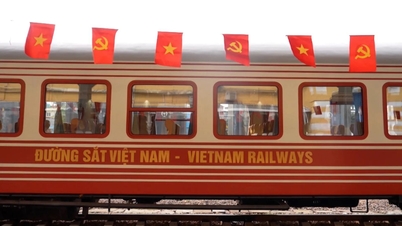





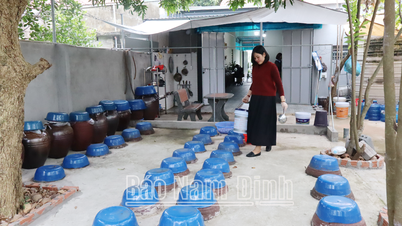















![[Photo] Nhan Dan Newspaper launches “Fatherland in the Heart: The Concert Film”](https://vphoto.vietnam.vn/thumb/1200x675/vietnam/resource/IMAGE/2025/10/16/1760622132545_thiet-ke-chua-co-ten-36-png.webp)






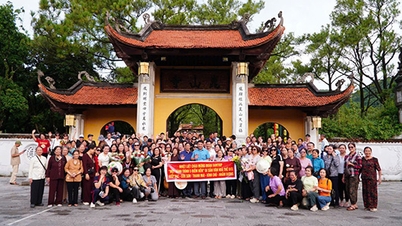







































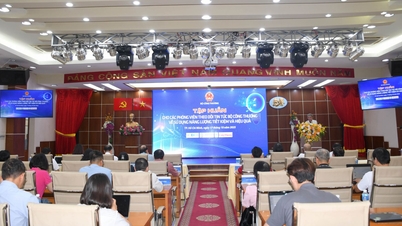



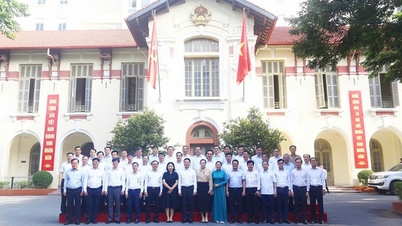
























Comment (0)